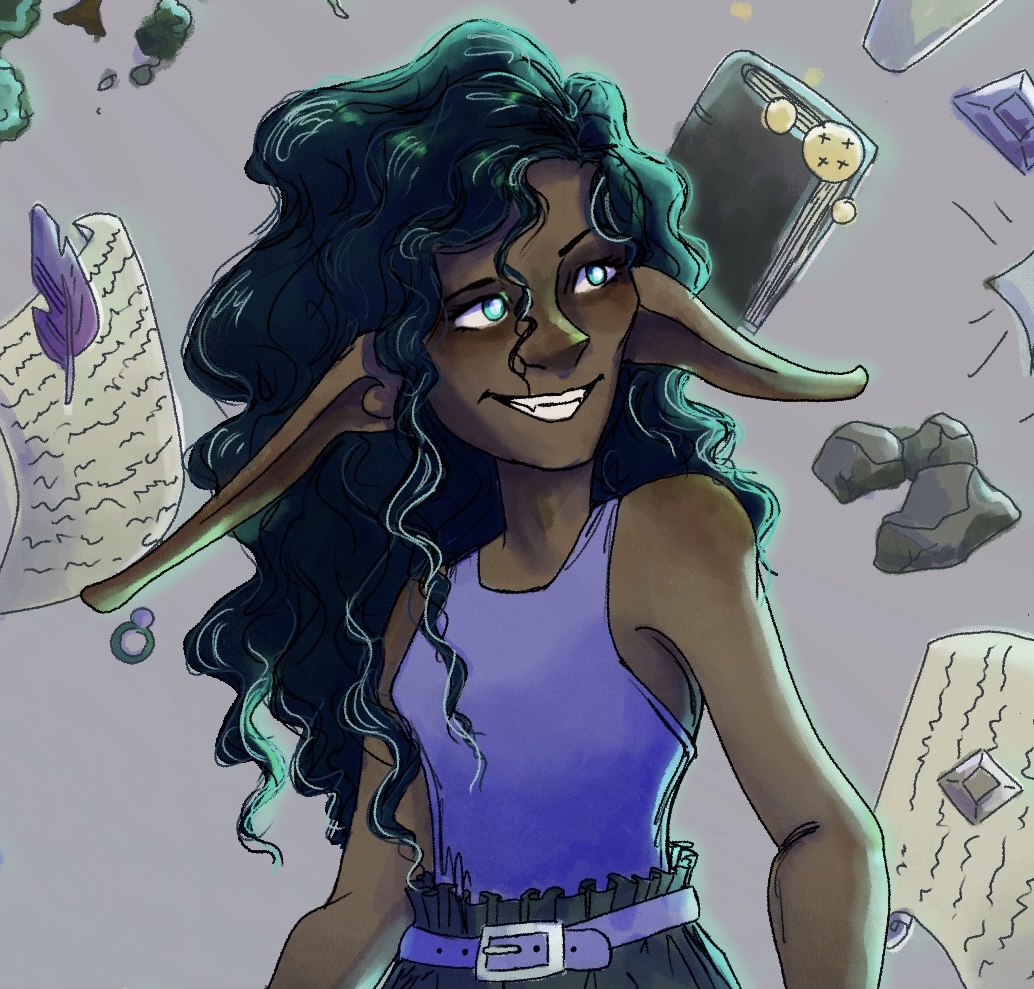An Introduction to Phaldorya
Phaldorya is the biggest continent on the planet Fyrdle. It once hosted the vast Akharmur Empire that went through a gradual decadence and following the conflict known as Great Mages' War around 3000 years ago culminating in the conflagration, was blighted for nearly four centuries. The continent did change aspect and although monsters and magical creatures still roamed freely in the wilderness, the continent was gradually populated again by humans. After over two thousand years new powers have risen and fallen and, in the dawn of a period of relative peace, new invention and old magic appear on the scene.
Sentient Species
Humans
Thank to their adaptability and high reproductive rate, humans are the most diffuse sentient creature on the surface of Phaldorya. Diffused over most of the continent, humans are diffused in various ethnicities Kharmian, Ahrmur, Otadan, Hintadu and Agorian. After long centuries of wars, they finally seem to have reached a balance and a period of peace dawns.
Elves
Elvish people survived the conflagration thanks to a powerful ritual that has created a magical barrier called Solybor, that still protects them from other creatures. Three of the elvish ethnicities (high elves, gray elves and wood elves) are prevalently settled in the north-oriental territories behind the barrier, while sea elves live in the depths of the Sunslumber Ocean and Dark elves fight for the dominance of the underground with Dwarves and other dark species.
Dwarves
The hills and mountain of Danu's crown and its underground are the Dwarven Kingdom. Stout, resilient and stubborn dwarves care over everything about their clan. Fierce fighters they are especially focused in the combat against giants and goblinoids that are diffuse in the superficial areas close to their reign. Their struggles to survive isn't limited to the surface, as in the underground they are to faces Dark elves and the subterrean monsters. The dwarves are divided in three ethnicities: the mountain dwarves, slightly taller and stronger, but diffident of other creatures; the hills dwarves, best artisans and valid merchants; subterrain dwarves, selfish and extremelly greedy, are considered evil by other humanoids.
Halflings and Gnomes
Although very different this two species have a very similar diffusion with community often mingled to humans in the outskirts of the major human settlements. Childish looking, nimble and curious the halflings tend to prefer a life of wandering, the gnomes instead can appear similar to slender dwarves to people that has no experience with them, great inventors and adept in the creation of magical illusions prefer to live in familiar groups. In the recent times a gnome settlement has been created as a Saythian Republic's protectorate in the caldera of Monte Comignolo, a inactive volcano.
Goblinoids
Disparaging defined green-blood or green-skin by other humanoids, this term is either uncorrect or limited, as not all goblinoid share this feature. Organized in large communities often based on the brutal strength, the diffusion of goblinoids has been historical the greatest curb to human diffusion. After suffering a dramatic overpower against the Broken empire alliance, goblinoids have withdrawn in the Arquir Desert and in the swamps that surround it from the south returning to their former life of tribal struggles and violence. Goblinoids comprise in their numbers goblins, hobgoblins, orcs, ogres and bugbears and are the only populations that can match humans for reproductive rate.
Giants
In a secluded kingdom on the highest peaks of Danu's crown, which exhistence is ignote to most humans, giants are characterized by the height and a clan organization that resembles vaguely the one of dwarves. Adapted to their habitat they come in a variety of ethnicities with features and skills that consent them to survive in extreme environments. Fierce opponents, if someone tries to invade their lands, often they limit to defend their ancestors' territories. The very slow reproductive rate and the dangers that characterize their harsh habitats on one side have strengthened this people but on the other hand have caused their number to slowly decline, despite the lack of natural enemies.

Cultural reception of magic
Magic in Phaldorya is divided in three major branches: Arcane, Divine and Traditional magic. Because of the critical importance of the Great Mages' War in history, the people's perception of Arcane magic is generally negative, mages and wizards are considered power-craving individuals and dangerous for the communities. The Dark Tiranny of Aitor Salgado has reinforced the feeling that a powerful wizard shouldn't be trusted. In several occasions violent conflicts have involved aggressive mobs versus wizards and caused devastating retaliation that worsened the relationship between commoners and wizards. Nobles realize that wizards, wisely employed, can be very useful advisors and try to mediate this mistrust. The Mages' conclave was created with the purpose of regulating access to Arcane magic for wizards, the leader of this organization swear to control and, if required, stand against each other in case of breach of conduct. Schools of magic are separated and, in each of them, wizards are trained as specialists, as they believe that multi-disciplinary magic would create the prerequisites for new conflicts. Some wizards secretly oppose this vision of magic believing that school segregation doesn't prevent anything, they go under the name of Hepterodox and profess a pluralistic vision of magic similar to elvish magic. Traditional magic is a collection of various form of orally transmitted magic knowledge, such as the arts practised by witches, seers, alchemists, summoners and bards. Equally mistrusted but less despised by commoners is, with few exceptions, exerted by people on the margins of society in small towns and villages. Farmers and peasant seek their services to protect them and their assets from famine and disease, for fertility or love issues. Finally Divine magic is the kind of magic bestowed on priests, templars and inquisitors by the Gods, highly respected figures across Phaldorya by commoners and nobles. Generally focused on healing and contrasting the negative energy plane, can have diverse applications according to each divinity portfolio. Alongside the control imposed by the Conclave, the Be Chuille's Inquisition was founded by Theodore Mills to monitor improper magic uses, focusing its attention on Arcane and Traditional magic. Every magic user has to have a Dyspelz at their name or face trial.
The fairies' kingdom
It is popular belief that between the continent of Phaldorya and the fairies' Kingdom run a strong relationship. Scholar are divided between some who completely deny the exhistence of fairies derubricating it to popular superstition, some who believe that the magic in Phaldorya was originated from Fairie and, lastly, some other consider it as the product of some high-mage of the old times. According to multiple legends and tales those two planes, which are geographically very similar, can randomically get very close and open a passage between the two realities through which people can transfer from one to the other. Of course, those portals can be open willingly if someone has enough experience and power with magic, but it requires uncommon skills and knowledge. Communicate with fairies and asking them to open a portal is much easier but very dangerous, as often the magic user who has contacted Fairie will be subject to the whims of the creature afterwards. Time flows in a different way in the two planes therefore travelling between them can have unforeseen effects of people that inadvertely or willingly crosses a portal that connects them.






Ooh hover images! Very nice introductory article :D
I have started practicing CSS, before I stepped into World Anvil I had only some vague notions of HTML, mostly using programs to produce visual websites and it is a revelation! I love it but to get to a good level I still need some time. I am very glad you recognized my efforts!